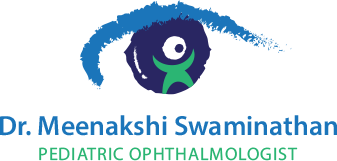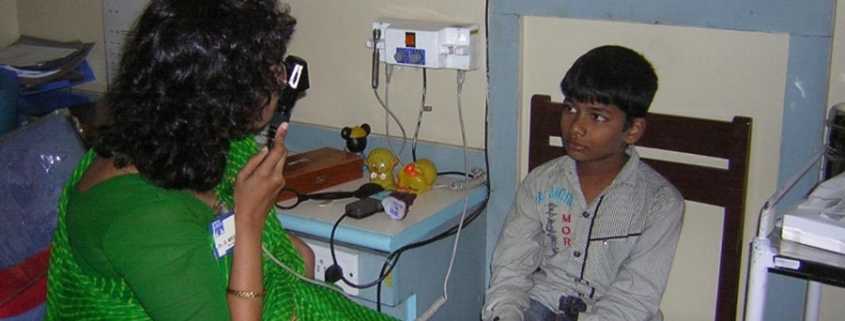Vision screening in children
Vision screening by the primary care provider, usually a pediatrician or a school nurse is a standard practice in many parts of the world. Why is this important? This article covers the importance of vision screening in children and do read on if you are a parent, schoolteacher or a pediatrician.
Children who have vision problems in both eyes will often complain of difficulty in looking at the blackboard or smartboard especially if they are older. Vision problems in younger children may present with incomplete work in school. Children may also show adaptations such as moving closer to the television or holding books or devices closer.
However, children with amblyopia or ‘lazy eye’ which develops in one eye, will continue to behave normally. This is because, they use the normal eye for all activities. Amblyopia develops if there is any difference between the two eyes, either different refractive errors, refractive error in only one eye or a squint. Presence of amblyopia may never come to light because the child does not show any signs of vision problems, managing with the better eye. The brain ignores the eye with the problem. And slowly the vision reduces. ‘You use it or lose it’ as they say.
Amblyopia if not detected early becomes tougher to treat as the child grows older. This is where the importance of screening comes in. There are standardized ways to test vision in children to detect amblyopia. It is important to test one eye at a time and make sure that the child does not memorize the chart or peek around the occlude.
Cooperative children who are familiar with alphabets may be tested with charts which have alphabets in English or vernacular at a standard distance. For younger children charts with symbols and pictures are available.
In the recent times, instrument-based screening has become popular. These are called photo screeners or vision screeners. There are several types on the market. The instrument typically takes a photo of the child’s eyes or calculates if there is a refractive error using other methods. It is quick and easy and can be done with minimal patient cooperation. Each instrument has clear guidelines as to when to refer to an eyecare provider. The instruments can often also pick up squints and other vision blocking pathologies like a cataract. These screeners are expensive and need a little training of the personnel in how to use it and when to refer a patient.
If you are a parent, ensure that your school has a good vision screening in place and this is carried out starting with primary school children. Teachers can also be trained to do the screening and this model is used in many parts of the world. You could also tie up with a ophthalmology or optometry clinic who may be willing to do the screening.
If you are a pediatrician, please check vision of children who come for a booster vaccine at 5 years of age. A vision chart positioned 6 meters from a child in a narrow corridor is perfectly adequate.
World Sight Day which is the second Thursday of October and which focuses on global eye health, can become your school’s vision screening day every year. Parent volunteers can take up screening too to support the school!



